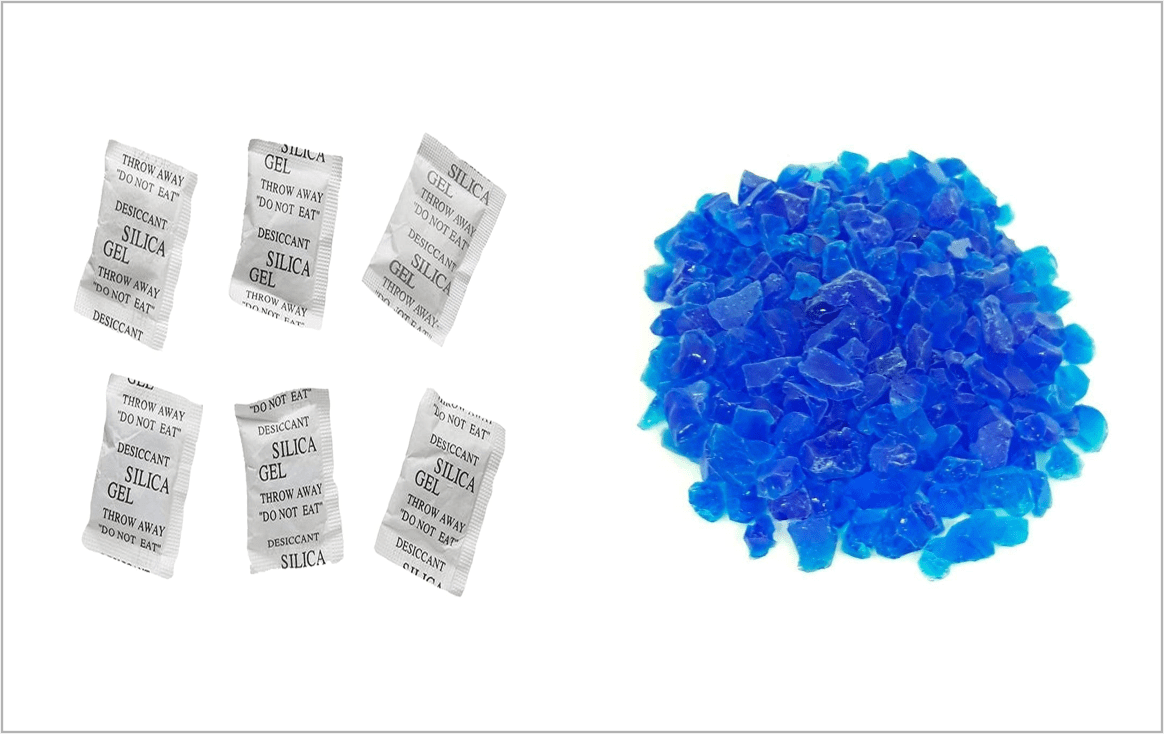
Silica gel is also used to dry the air in industrial compressed air systems. Air from the compressor discharge flows through a bed of silica gel beads. The silica gel adsorbs moisture from the air, preventing damage at the point of use of the compressed air due to condensation or moisture.
In many items, moisture encourages the growth of mold and spoilage. Condensation may also damage other items like electronics and may speed the decomposition of chemicals, such as those in vitamin pills. Through the inclusion of silica gel packets, these items can be preserved longer.
Silica gel may also be used to keep the relative humidity inside a high frequency radio or satellite transmission system waveguide as low as possible (see also humidity buffering). Excessive moisture buildup within a waveguide can cause arcing inside the waveguide itself, damaging the power amplifier feeding it. Also, the beads of water that form and condense inside the waveguide change the characteristic impedance and frequency, degrading the signal. It is common for a small compressed air system (similar to a small home aquarium pump) to be employed to circulate the air inside the waveguide over a jar of silica gel.
Silica gel is also used to dry the air in industrial compressed air systems. Air from the compressor discharge flows through a bed of silica gel beads. The silica gel adsorbs moisture from the air, preventing damage at the point of use of the compressed air due to condensation or moisture. The same system is used to dry the compressed air on railway locomotives, where condensation and ice in the brake air pipes can lead to brake failure.
Silica gel is sometimes used as a preservation tool to control relative humidity in museum and library exhibitions and storage.